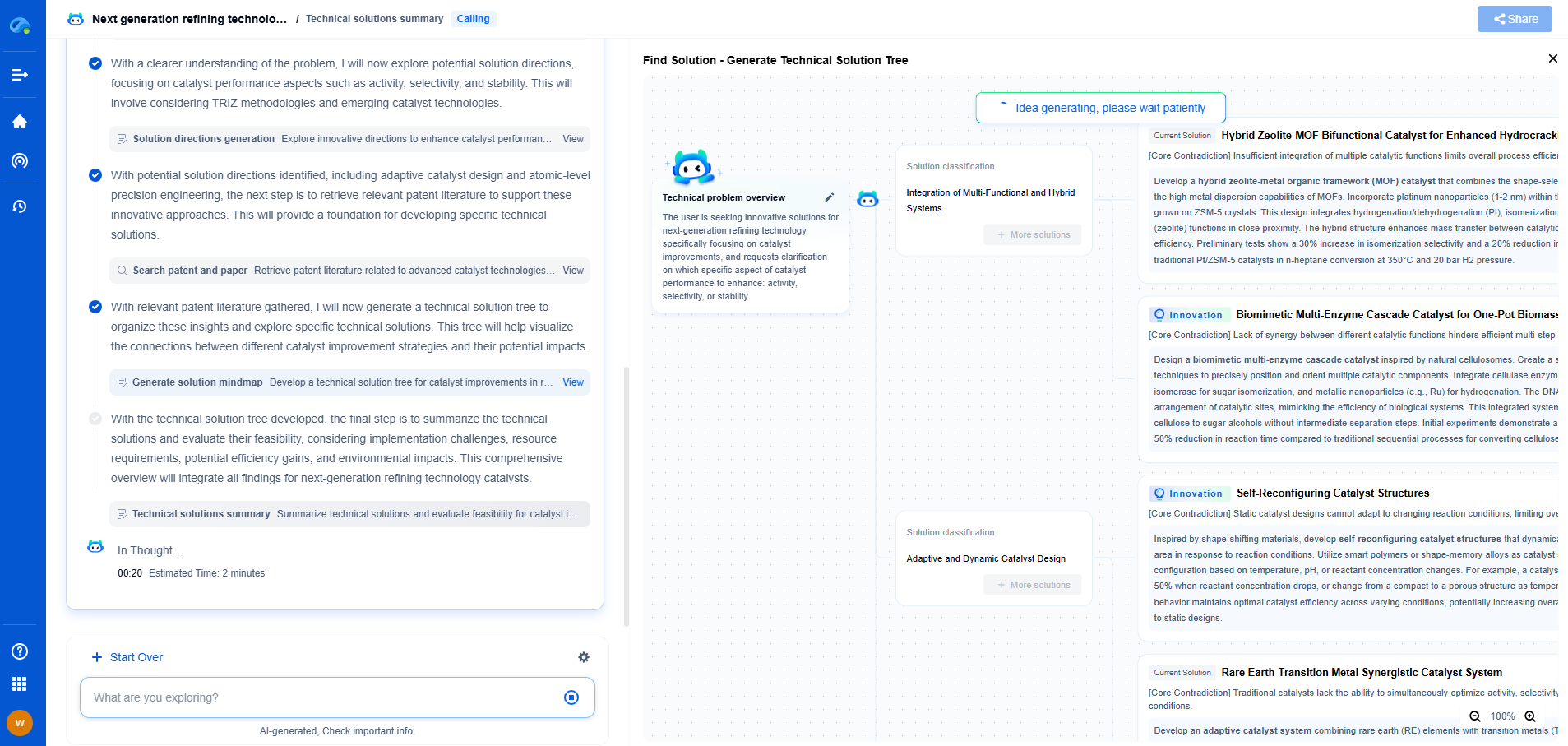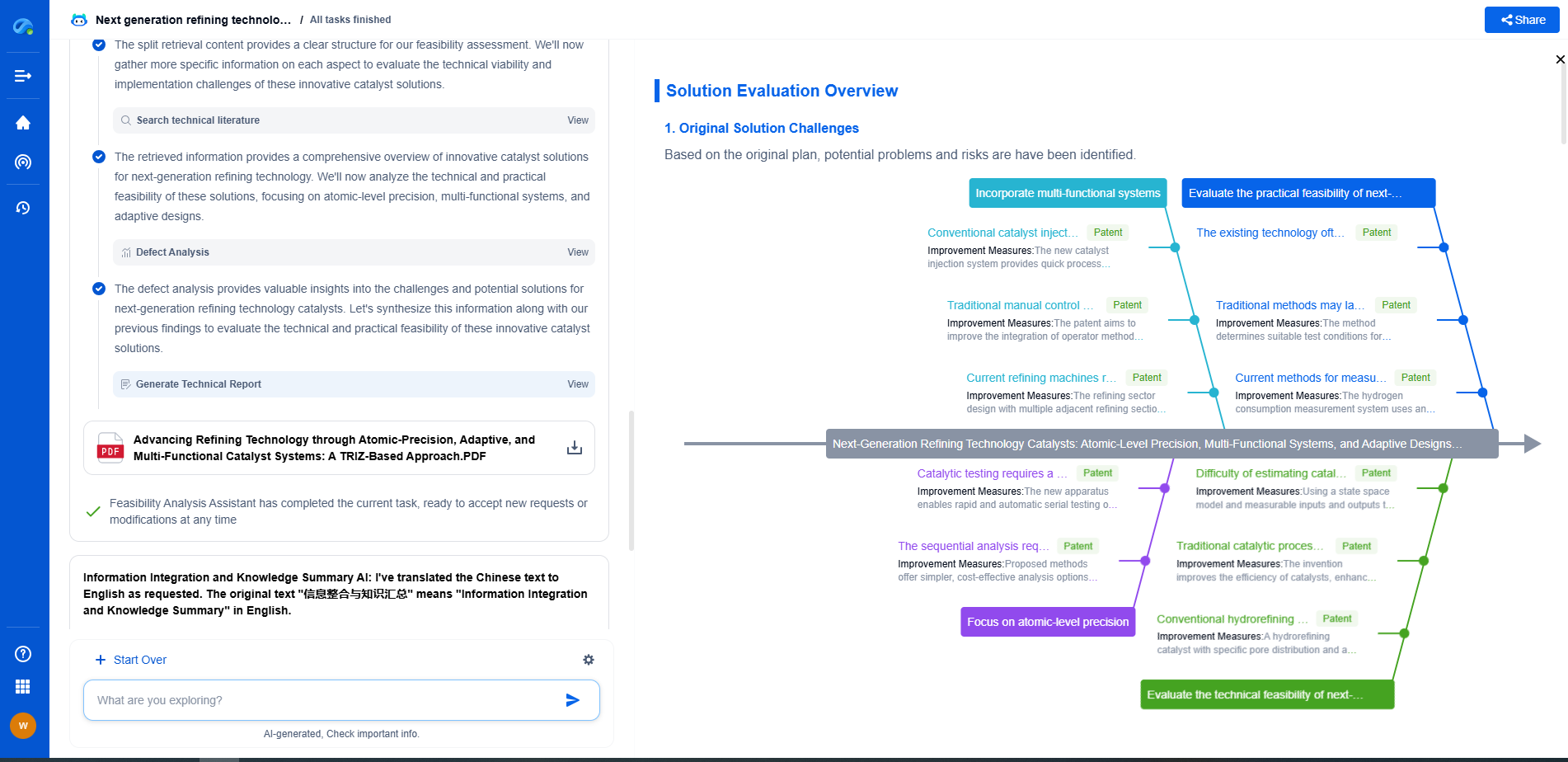Why Is My Soundproofing Foam Not Working? Common Mistakes and Fixes
JUL 16, 2025 |
Soundproofing foam is often misunderstood. Many people believe that simply sticking foam panels on their walls will magically block all unwanted noise. However, soundproofing foam primarily absorbs sound within a space rather than blocking external noise. It's crucial to grasp this fundamental principle before diving into common mistakes and their solutions.
Common Mistakes When Using Soundproofing Foam
1. Misapplication of Foam
One of the most frequent errors is applying soundproofing foam incorrectly. Foam needs to be strategically placed for optimal sound absorption. Random placement can lead to uneven sound absorption, leaving some areas of a room acoustically imbalanced. It's essential to cover surfaces where sound waves hit directly, such as walls facing the source of noise.
2. Inadequate Coverage
Another common mistake is not using enough foam. A few panels scattered around a room will do little to dampen sound. For soundproofing foam to be effective, a significant portion of the surface area must be covered, especially places where sound waves are likely to reflect, such as corners and parallel walls.
3. Overlooking Other Soundproofing Elements
Relying solely on foam is another pitfall. Effective soundproofing requires a combination of materials and techniques. Foam is excellent for reducing echo and absorbing sound, but it does little to block sounds from entering or leaving a room. For comprehensive soundproofing, consider adding mass-loaded vinyl, acoustic panels, or even double-glazed windows.
4. Incorrect Foam Density and Thickness
Not all foam is created equal. The density and thickness of foam panels play a critical role in their effectiveness. Lightweight, thin foam panels may not absorb sound adequately. It's important to choose foam with the right density and thickness suited to your specific needs. Thicker, denser foam panels are generally more effective at absorbing lower frequency sounds.
Fixes and Solutions
1. Plan and Strategize
Before purchasing and applying soundproofing foam, take time to analyze your space. Identify the primary sources of sound and the surfaces that contribute to echo and reverberation. Create a plan that targets these areas with sufficient foam coverage.
2. Combine Soundproofing Methods
Augment foam with other soundproofing solutions. For walls, consider adding mass-loaded vinyl or drywall to block sound transmission. Use door sweeps and window seals to prevent sound leakage. The combination of different materials will offer a more comprehensive solution.
3. Choose the Right Foam
Select foam panels with appropriate density and thickness for your needs. Higher density foams can better absorb a wider range of frequencies. Consult with a specialist if you're uncertain about the best type of foam for your application.
4. Ensure Proper Installation
Proper installation is key to maximizing the effectiveness of soundproofing foam. Use adhesive that securely attaches the foam to the intended surfaces, and ensure that panels are flush against the wall without gaps that can allow sound to pass through.
Conclusion: Achieving Successful Soundproofing
Soundproofing foam can be an effective tool for reducing noise when used correctly. Understanding its purpose, avoiding common mistakes, and implementing a strategic approach with complementary materials will help you achieve the desired level of noise reduction. By applying these insights, you can transform your space into a quieter, more acoustically pleasant environment.
In the world of vibration damping, structural health monitoring, and acoustic noise suppression, staying ahead requires more than intuition—it demands constant awareness of material innovations, sensor architectures, and IP trends across mechanical, automotive, aerospace, and building acoustics.
Patsnap Eureka, our intelligent AI assistant built for R&D professionals in high-tech sectors, empowers you with real-time expert-level analysis, technology roadmap exploration, and strategic mapping of core patents—all within a seamless, user-friendly interface.
⚙️ Bring Eureka into your vibration intelligence workflow—and reduce guesswork in your R&D pipeline. Start your free experience today.
- R&D
- Intellectual Property
- Life Sciences
- Materials
- Tech Scout
- Unparalleled Data Quality
- Higher Quality Content
- 60% Fewer Hallucinations
Browse by: Latest US Patents, China's latest patents, Technical Efficacy Thesaurus, Application Domain, Technology Topic, Popular Technical Reports.
© 2025 PatSnap. All rights reserved.Legal|Privacy policy|Modern Slavery Act Transparency Statement|Sitemap|About US| Contact US: help@patsnap.com

